Watching a sumo tournament in Japan is a fascinating experience. Consider it not just a sporting event, but a display of long-standing culture and tradition. While it’s pretty easy to understand who wins and who loses, if you don’t know anything else about sumo, a lot of what makes it special will be lost, which is a real shame. Good news is, the basics are not hard to master, and we’ve put them together in this handy guide so you can understand what’s going on like a pro. So get ready to impress your less-prepared friends with your new-found sumo knowledge!
Table of Contents
When are sumo tournaments held in Japan?
Grand sumo tournaments are held six times a year. Three times in Tokyo (January, May and September) and once each in Osaka (March), Nagoya (July) and Fukuoka (November). Each tournament lasts 15 days.
Grand sumo tournaments go from morning to early evening each day of the tournament. The lower ranks are the first to appear, leading up to the top maku-uchi division at the end of the day. The top division usually starts around 3.30pm and ends at around 6pm.
Sumo rankings
After each grand tournament, sumo rankings are revised and rikishi (sumo wrestlers) can either be promoted or demoted based on their performance. The official ranking list is known as banzuke. It is issued by the Nihon Sumo Kyokai (Japan Sumo Association) and printed in ancient, stylized calligraphy.
The top division, the pro-league, if you will, is called the maku-uchi and is fixed at 42 rikishi. Within the maku-uchi division, there are five ranks. From lowest to highest, they are maegashira, komusubi, sekiwake, ōzeki and yokozuna. Most people come to see the ōzeki and yokozuna; you should try to remember those names. You’ll likely feel (and hear) the excitement escalate when rikishi of those ranks enter the ring.
Below the maku-uchi division, there are the following divisions: jūryō, makushita, san-dan-me, jo-ni-dan and jo-no-kuchi. Wrestlers below the makushita division do not get to wrestle on each day of the tournament.
The yokozuna
The top yokozuna ranking is unique in that it is the only position that a rikishi can never be demoted from, even if they perform poorly in a grand sumo tournament. Instead, if a yokozuna continues to have poor form, they are expected to take the honourable route and retire.
To even be considered for promotion to yokozuna, a rikishi must first win two consecutive tournaments (or its equivalent) at the second-top ranking of ōzeki. They must have proven themselves to be consistently capable of good performance and to be considered a character worthy of such a position.
Sumo names
It is customary for each rikishi to choose a poetic sumo name for themselves. Some choose a name that has some reference or derivation from their place of birth or the name of their sumo master. Common sumo name endings include –yama (mountain), –gawa (river) and –umi (sea).
During tournaments, and in public life in general, rikishi are referred to by their sumo name.
The sumo ring (dohyo)
When you enter a sumo stadium, the first thing you’ll likely notice is the ring, or the dohyo, and you may be surprised at just how small it is. It is 18 square feet, 2 feet high and made of a special kind of clay. Straw bales are buried in the clay, with a small portion remaining visible and protruding up through the surface to mark the circle for play. This means that bouts are confined to an area of a little over 15 feet in diameter.
The clay is covered with a thin layer of sand, that you’ll see being raked smooth between bouts. Suspended above the dohyo with cables is a roof resembling a Shinto shrine. Each corner has tassels to mark the four seasons of the year.
The dohyo is considered a sacred space. As a spectator, you must never attempt to enter it, even after the end of the day’s play.
Sumo ceremonies
Before play – Entering the ring ceremony
Before the juryo and maku-uchi bouts begin, a traditional ritual takes place. The rikishi are divided into two “teams” of east and west, although they do not compete as teams and it has no bearing on who they face as an opponent. You’ll therefore see this initial ritual take place twice – once for the east grouping and once for the west.
This ritual is known as the dohyo-iri or ‘entering the ring’ ceremony. The team will walk down the aisle in reverse order of rank wearing colorful and elaborate ‘keshō-mawashi’ or ceremonial aprons. The aprons are made of silk, and are richly embroidered with various designs and gold fringe hemming. They are worth a minimum of US$20,000 each. Once all the rikishi have been introduced and formed a circle, they perform a short ancient ritual, before departing.
Where are the yokozuna?
In the maku-uchi division, the top-ranking yokozuna are notably absent from this part of the ceremony, and that’s because they have a special part to play. After the rest of the rikishi have completed their ritual, a yokozuna will come down the aisle, flanked by a senior referee and two maku-uchi wrestlers in ceremonial aprons, one bearing a sword. The yokozuna will be wearing a large braided hemp rope over his own apron. The rope itself weighs 25 to 35 pounds and is adorned with strips of paper in zig-zag patterns. This is a religious symbol in Japan that you can see at Shinto shrines.
The ritual begins with the yokozuna clapping his hands; this is to attract the attention of the gods. He will then extend his arms to the sides and turn his palms upwards to show he isn’t concealing any weapons, in honor of fair play.
The high lifting of the legs and stomping on the ground is to symbolically drive evil from the dohyo. You can also witness the incredible strength and agility of the yokozuna with a magnificent footwork display. Once completed, other yokozuna will enter in turn and repeat the ceremony.
After play – the bow dance
At the end of the day’s play, there is one more ceremony, called the yumitori-shiki, or the “bow dance”. The honour is given to a specially selected makushita rikishi (3rd division wrestler), in which they twirl the bow at a great pace.
The ceremony was introduced sometime during the Edo Period (1603-1867) when the winning rikishi was awarded a bow as a prize. He would perform the ‘bow dance’ to express his satisfaction. Nowadays, this ceremony may be considered an expression of satisfaction on behalf of all the victorious rikishi of the day.
The referees
Before getting to the play itself, it would be remiss not to mention the gyōji or referees. They are dressed in patterned kimono of the same style worn by samurai in the Kamakura Period (1192-1333), as well as black gauze court hats resembling those worn by Shinto priests.
Like the rikishi, the gyōji are also graded. A gyōji’s ranking can be determined by the color of the tassel on his wooden war fan, known as gunbai. The top ranking tate-gyōji have a purple or purple and white tassel. They are the only referees who can officiate a bout involving a yokozuna. Those who can officiate the next three rankings have a red tassel and those who round out the lower rankings of the top maku-uchi division have a red and white one. The second jūryō division referees have a blue and white tassel, and for all divisions below, it is blue or black. Higher ranking gyōji also wear Japanese split toe socks (tabi) and straw sandals (zōri), while lower ranked gyōji are barefoot.
When the gyōji enters the dohyo, they call out the sumo names of each of the wrestlers in a specially-trained, high-pitch voice. It is one of the characteristic sounds of sumo and can be enjoyed as part of pre-match rituals. The gyōji will signal for play to begin with his fan. During the bout, the gyōji will move about the ring keeping a close eye on the movements and, interestingly, also shout words of encouragement to the rikishi.
In addition to the referee in the ring, there are also five more dressed in black formal kimono sitting around the ring. Should the result be a close call, or if there is any doubt over the accuracy of the main referee’s decision, the other judges will enter the ring and confer. While action-replays will be shown on TV, the referees do not have access to them and base their decision on their own eye-sight and experiential judgement, just like the early days of sumo. The conferment may result in the over-ruling of the main referee’s initial decision or a re-match.
Sumo attire
The rikishi’s only piece of clothing during a bout is a loincloth, known as mawashi. It is made of heavy silk, approximately 10 yards long and 2 feet wide. It is folded in six and then wrapped round the waist from four to seven times depending on the girth of the rikishi. The strings that hang from the front of the mawashi are made from silk and stiffened glue, and are purely ornamental. It is not unusual for them to become detached during the course of a bout. Rikishi only use one mawashi for tournaments until it is worn out, which may take several years of play.
Interesting fact: Rikishi never wash their tournament mawashi. Instead, they just brush them off and hang them out in the sun. There are two reasons. One is that they believe washing the mawashi would wash away their experience of previous bouts, therefore making them unlucky. And secondly, washing weakens the silk fabric, which could cause problems during a bout, as an unsecured mawashi leads to disqualification.
Sumo wrestlers keep their hair long and wear it in top-knot styles adopted from those fashionable during the Edo Period. The type of top-knot that a rikishi wears indicates their ranking. The maku-uchi and jūryō wrestlers, from the two top divisions, wear a more elaborate style called o-ichi-mage, which resembles a gingko leaf. The lower divisions wear a plainer top-knot with paper strings, known as chon-mage. Top-knots continue to be used in sumo not only to maintain tradition, but because they also serve to project the head in case of a fall.
Pre-match rituals
After entering the dohyo before a bout, the rikishi go through a series of symbolic pre-match rituals and movements. In order to cleanse their minds and bodies, the rikishi will rinse their mouths with water and wipe their bodies with a paper towel. They will also toss salt into the ring to purify the space and protect against injuries. The salt toss is, however, a privilege only afforded to those of the top three divisions. This ritual is known as shiomaki. Movements from the dohyo-iri, the ‘ring entering ceremony’, are also repeated; namely the raising of the arms and stamping of the feet. This part is known as chiri-o-kiru. By lifting the arms and symbolically showing they have no weapons, they show they respect fair play.
Pre-match rituals may be repeated several times, in a type of mental battle designed to psych out one’s opponent. With these rituals usually taking longer than the bout itself, which is often over in a number of seconds, they are a huge part of the sumo experience. The most entertaining bouts are often those with elongated preparations, in which some rikishi further build up tension and excitement, by hitting their stomachs, yelling, and giving extra dramatic salt tosses, much to the delight of the crowd.
Interestingly, these pre-match rituals could go on for however long the rikishi wanted in the early days of sumo. In an effort to speed things up, however, a ten minute time limit was introduced in 1928, which was later reduced to seven, then to five, and to the present-day four minutes. The four minute period is only afforded to top division maku-uchi bouts. In the second jūryō division, wrestlers are only given three minutes. While in the lower ranks, they must begin immediately.
The shikiri and the initial clash
When it comes time for the bout to begin, the rikishi will squat behind their respective lines with their arms resting upon their knees. This is called the sonkyo or “toeing the mark” posture.
They will then enter the shikiri, in which they will crouch forward and position themselves in the “get-set” position in preparation for the initial clash. During this time, the rikishi stare at each other intensely in a kind of “cold warfare”. They may get up from this position and repeat some of the other pre-match rituals a number of times, as long as they stay within the time limit.
They wait in the shikiri posture for the right psychological moment to begin. On occasion, this can lead to one rikishi moving forward before another, rather than a simultaneous clash. In such cases, the bout will begin again. This initial clash is known as tachi-ai and the battle thereafter as torikumi.
The rules of sumo
Essentially the first rikishi who touches the ground with any part of their body (including their top-knot), or is forced outside the inner circle of the dohyo is defeated.
There are also rules against striking with fists, hair pulling, eye gouging, choking, kicking in the stomach or chest, and seizing the part of the loincloth (mawashi) that covers the vital organs.
There are no weight divisions or limits in sumo, so a rikishi may find themselves facing an opponent twice their size. However, weight is not always an indication of how a bout will play out. Smaller rikishi may use the weight of their opponent to their advantage, as a larger sumo wrestler may find it more difficult to recover when they lose balance, and essentially fall under their own weight. We have been fortunate to witness quite a few exciting David and Goliath battles ourselves!
Sponsored bouts
Some bouts will be sponsored, which means that the winning rikishi can take home a cash prize for winning a single bout. These are usually bouts that involve yokozuna or those that will likely be an exciting clash. You know a bout is sponsored if flags are paraded around the dohyo before play. The flags bear the names and logos of the sponsors, and the more flags, the more money is up for grabs.
At the end of play, the winning rikishi is handed a wad of cash (or several wads for the big clashes) by the main referee.
Sumo tournament winners and prizes
The rikishi with the best record of wins over losses over the 15 day tournament is awarded the Emperor’s Cup after the last match on the final day. This often means that a winner may already be decided days before the end of the tournament, but in any case the tournament is played out to the end. These matches maintain importance for the banzuke (sumo rankings) and, of course, pride.
In addition to the Emperor’s Cup, the winning rikishi also receives a substantial amount of money, as well as dozens upon dozens of other cups and prizes of congratulations from consulates and embassies of other countries (generally countries from where top division rikishi hail from), and from prefectures around Japan.
We have been fortunate to attend the final day of play once before through a friend – it is usually extremely difficult to get tickets for the final day, as most of them are already reserved for connections of the sumo association and the wrestlers themselves – and we were surprised to learn about all these additional cups and prizes. The winning rikishi was on the dohyo for more than an hour receiving them.
In addition, there are three additional awards. One is called the shukun-shō for outstanding performance, which is awarded to the rikishi who upset the most yokozuna and ōzeki. The others are called kantō-shō and ginō-shō, which are awarded for fighting spirit and technique respectively.
Tickets and seating
There are two types of seating available: box seats and chair seats, each with A, B and C options, in order of their proximity to the action. Ringside seats can also be arranged by phone (Japanese language only) and cost around US$150 each. Note that eating, drinking and photography/videography is not allowed in this area, and that children or anyone with limited mobility may not be seated in the front rows, due to the risk of injury when, on occasion, rikishi may fall onto surrounding spectators.
Box seats
The box seats come in various sizes that can accommodation between 2-6 people. They are floor seats with cushions, with low metal bars defining the space. In box seats, you’ll therefore need to remove your shoes and sit on the floor. There isn’t much space in the boxes so you’ll find your legs go numb after a while of sitting cross-legged or traditional seiza style (legs tucked underneath yourself). It’s advisable not to have much stuff with you so you aren’t any more cramped than you need to be.
If you have the budget for it and don’t mind sitting on the floor, it’s definitely a sumo experience to remember. Expect box seating to cost about US$100 per person, and all seats in the box must be paid for, even if your party is smaller.
Chair seats
Chair seats are exactly as they sound: regular chair arena seating. Expect to pay around US$40-80, depending on the seats.
Non-reserved chair seating may be available on the day on a first-come first-served basis for as little as around US$20 and just a few bucks for children.
Check the official grand sumo tournament website for more information on available seating and sumo tickets.
Pro-tip
Most people only come for the intermediate juryo and top maku-uchi division bouts, which start at about 2pm. Until about lunch time, the stadium is virtually empty, especially on weekdays, which means you can sit further forward for a while in the best seats in the house, even if you have cheaper tickets.
If you have the time in your schedule, we recommend going early in the day’s play and enjoying seeing play up-close. These will be the lower divisions, but it will allow you to get a better sense of some of the rituals and to get some photos closer up.
While the staff don’t mind if you do this, we always try to be respectful and not be there when the actual ticket holders arrive. When the stadium starts filling up (usually around 12:30 or 1:00), we retreat back to our designated seats.
Sumo souvenirs
As part of your ticket purchase, you can add on souvenir packs that include such things as a bento lunch box, beer and green tea, snacks and official sumo souvenirs.
Souvenir stores are also available at the stadium. Just keep in mind that they tend to close up shop quite soon after the day’s play so if there is something you have in mind, best to pick it up between play during the day, or head there immediately after play has finished.
Food and drinks at the sumo
You can freely eat and drink at the sumo, including consuming alcohol. Food and drink may be bought on-site or brought along from home.
Typical sumo snacks include yakitori (grilled chicken skewers) and chanko-nabe, a soup which is packed with basically anything and everything. It’s the style of soup that sumo wrestlers eat in order to maintain their weight.
Beer is a typical drink along with kaki no tane (also known as kaki-pi), a mix of crescent-shaped senbei crackers and peanuts.
Getting a photo with a sumo wrestler
If you come earlier in the day, it is quite easy to see sumo wrestlers wandering in and out of the stadium and at the nearest train station. The amateur division wrestlers don’t have the pomp and ceremony afforded to the top wrestlers, who are usually chauffeured to and from the venue with security. You can expect to see lower division wrestlers making their own way to and from the tournament via public transportation. If you ask nicely, you might be able to get a cool souvenir photo with one of them.
The top division wrestlers won’t usually arrive at the stadium until the early afternoon. If you go outside at the right time, you might be able to catch them entering. They usually won’t stop for photos for security reasons and because they would never get inside if they posed for everybody, but you might be able to get some good snaps of them passing by.
Around the Kokugikan (sumo stadium) in Ryōgoku, Tokyo
Ryōgoku Station
When you reach Ryōgoku train station in Tokyo, its connection with sumo is immediately evident. Firstly, you won’t miss the signs to the Kokugikan, which are clear and everywhere. Secondly, you’ll find huge portraits of some of the top wrestlers hanging on the walls, along with some fun facts. For example, there is a chart on the wall near the ticket gates indicating the height of some sumo wrestlers, so you can see how you stack up.
Chanko-nabe restaurants
Around the station and stadium, which are right next to one another, you’ll find some chanko-nabe restaurants, if you want to continue the sumo theme into dinner. Note that restaurants in the area can get very busy during tournament time so you may need to make a reservation.
Sumo Museum
On the first floor of the Ryōgoku Kokugikan, there is a free sumo museum that showcases the history of sumo and houses various important sumo artifacts, including 3,700 sumo Nishiki-e (multi-colored woodblock prints), 500 sumo dolls and various keshō-mawashi (ceremonial aprons) from past top rikishi. Here you can also see the official banzuke (official ranking list).
The exhibition changes six times a year and the museum also functions as a research center that continues to study and review sumo history as an integral part of Japanese culture.
Please note that during tournaments, the sumo museum may only be accessed by same-day ticket holders.
I won’t be in town for a tournament – can I still see sumo?
Sumo stable training sessions
Sumo wrestlers live and train at “stables” (beya) and have strict training schedules most days. It is possible to visit sumo stables and see early morning training sessions free of charge. You should call ahead to confirm if training will be taking place the day you wish to visit and that you may come. Your accommodation (or even a tourist information counter) should be able to assist you with making the call, as it is usually a Japanese language only affair.
You can generally go at anytime of the year, however, stables may be closed to visitors during grand tournament time and perhaps a week after as a rest period. There may be other times when the stables may close and of course individual wrestlers will have their own schedules and days off.
There are about 45 sumo stables in Tokyo. Most can be found around the Ryōgoku area, where three of the six grand sumo tournaments are held. They are often in nondescript apartment buildings with the training area on the ground floor and rikishi lodgings on the upper floors.
Musashigawa Beya in Uguisudani, Kasugano Beya near Ryōgoku Station, Takasago Beya near Asakusa Station, and Arashio Beya in Nihonbashi are all accustomed to foreign visitors. The latter has an English website and even a sample of what to say in Japanese when calling up to check if practice is on for the next day. They have, however, stopped visitors from entering the practice area, and instead have people watch from behind a glass window. If you’re happy to just take a few snaps, then this can be an easy option to arrange on one’s own.
Unlike a sumo tournament, no eating, drinking, speaking (even so much as a whisper) or flash/shutter sounding photography, among other distracting behavior, is allowed. Training is considered serious business and as this is the sumo wrestlers’ place of residence, consider it to be equivalent to entering a private home. As such, it should be treated as an honor and privilege, rather than a tourist attraction. If you plan on going, do arrive on time and stay for the duration of the practice. Rather than snapping incessantly during practice, it is often better to wait until the end, when sumo wrestlers are often happy to interact with visitors and pose for photos.
Special sumo events
There are sometimes special sumo events where you can see sumo wrestlers in action. One that comes to mind is the free sumo event held in early April at Yasukuni Shrine in Tokyo. The event coincides with cherry blossom season and is a rare opportunity to interact with rikishi as they wander the grounds.
During Setsubun on February 3rd, sumo wrestlers are often invited to take part in mamemaki (bean throwing) at temples and shrines throughout the country. You won’t see them in action, but they will be wearing traditional robes and top-knots, and are often happy to pose for pictures and hold babies, a ritual that is associated with bringing good fortune in Japan.
In fact, on Children’s Day on May 5th, the ‘Naki Zumo’ festival takes place. It is a 400-year-old ritual in which sumo wrestlers hold up babies and attempt to make them cry. It stems from an old Japanese saying that says a crying baby will grow up prosperous, as cries from an innocent babe are said to drive away evil spirits. If they don’t cry simply by being away from their parents and being held by a huge stranger trying to startle them, a referee will come on stage and try to scare them with masks and loud noises.
Hundreds of babies participate, with parents often paying for the privilege. Babies are held up two at a time. The first one to cry is deemed the winner. If they burst into tears at the same time, the winner is decided based on the loudest and longest cry. There are naki zumo festivals across the country, but a well-known one is held at Senso-ji Temple, Tokyo‘s oldest temple.
Find hostels in Tokyo and around Japan
Get free credit towards your first AirBnb
Links in this post may be affiliate links, meaning if you make a booking via them, we may earn a commission for referral, at no extra cost to you. As always, we keep it real, and tell it like it is.

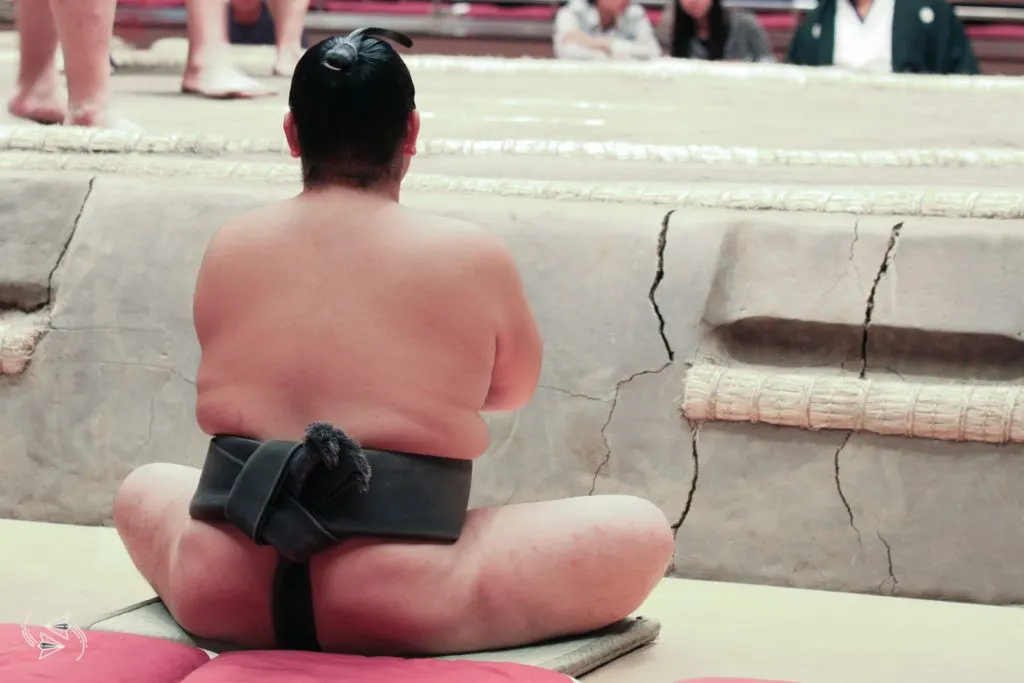
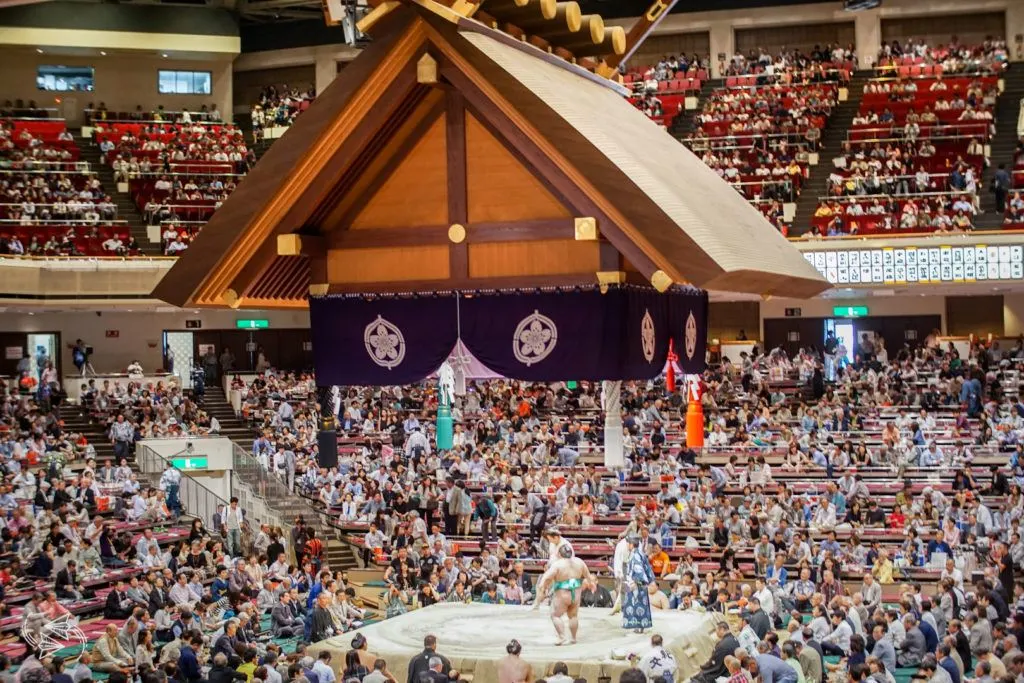
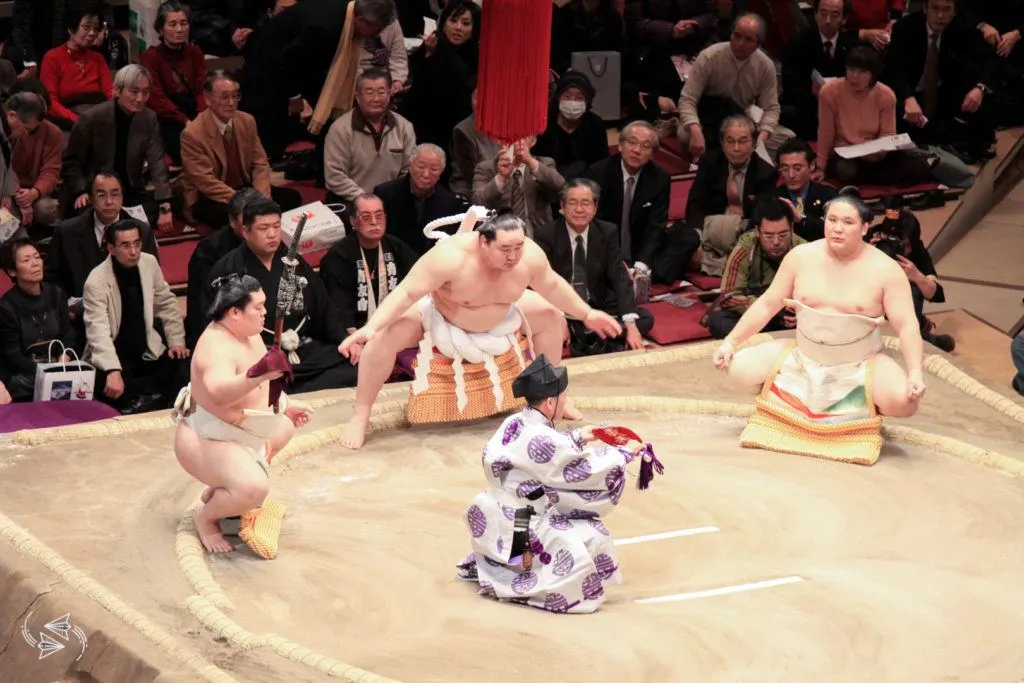
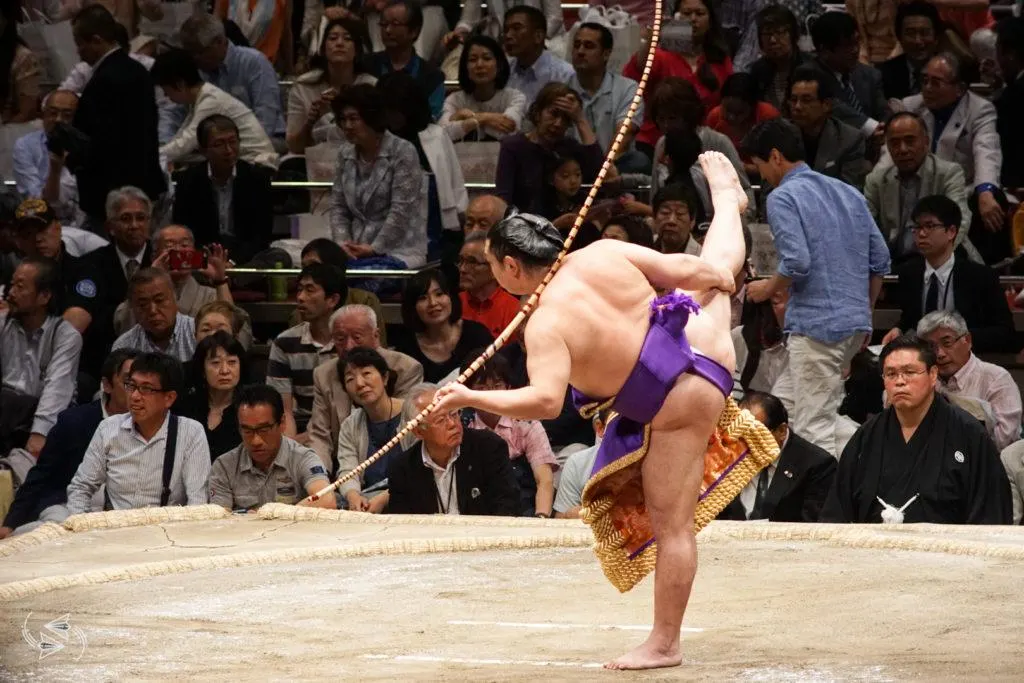
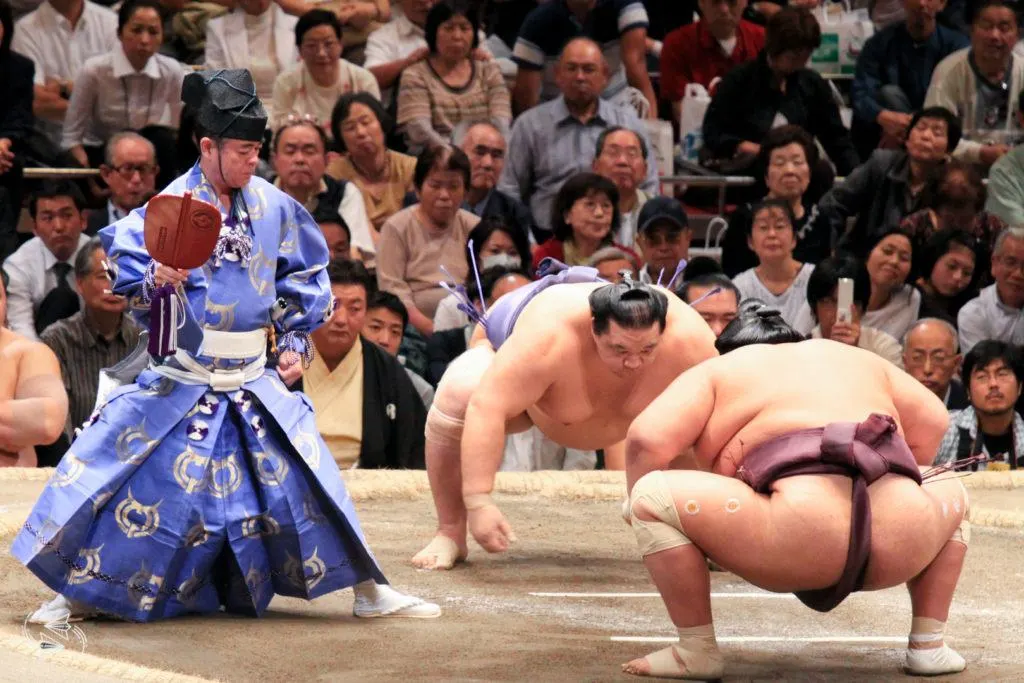
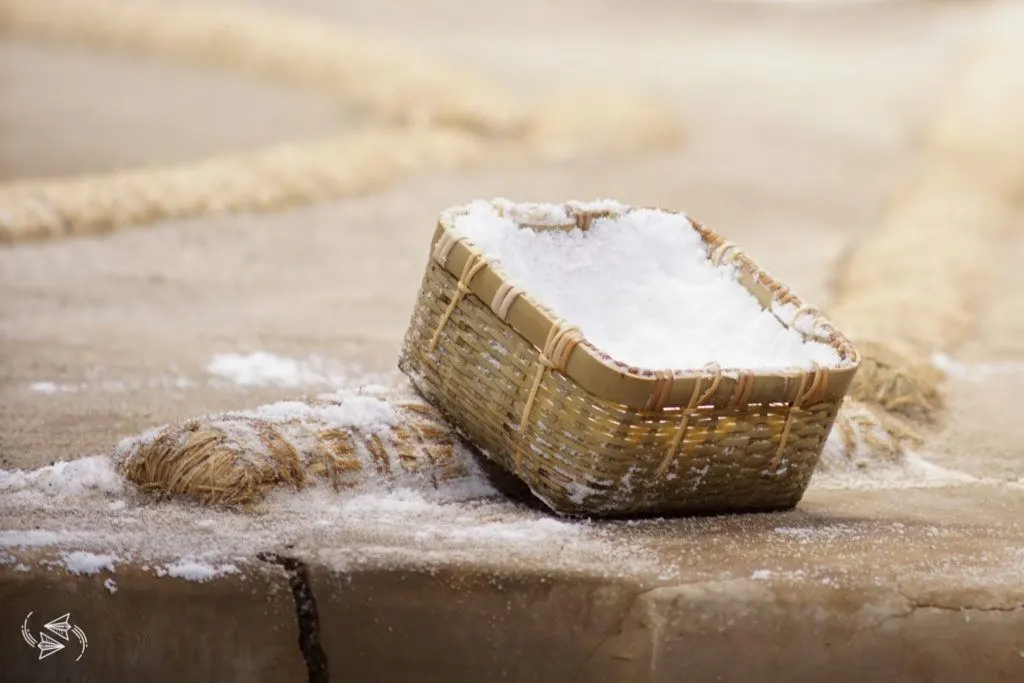
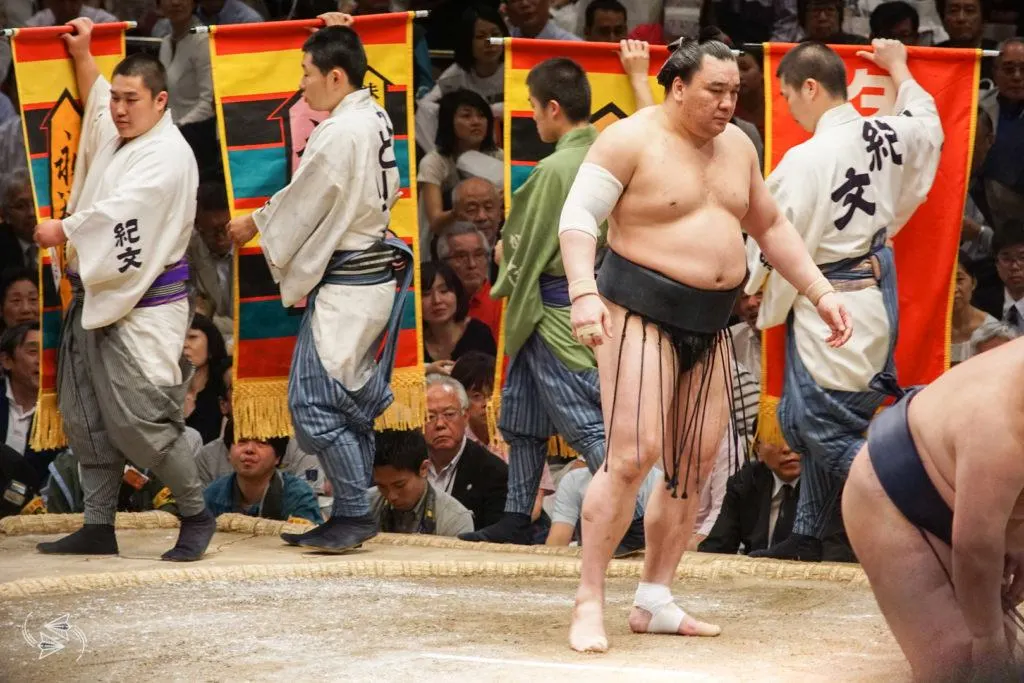
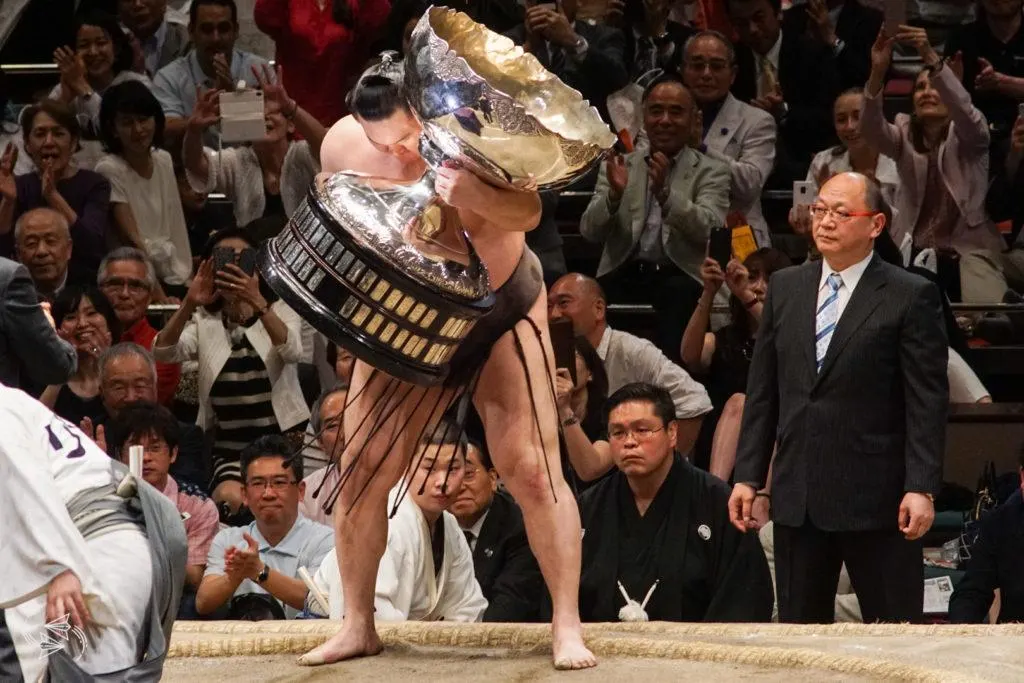
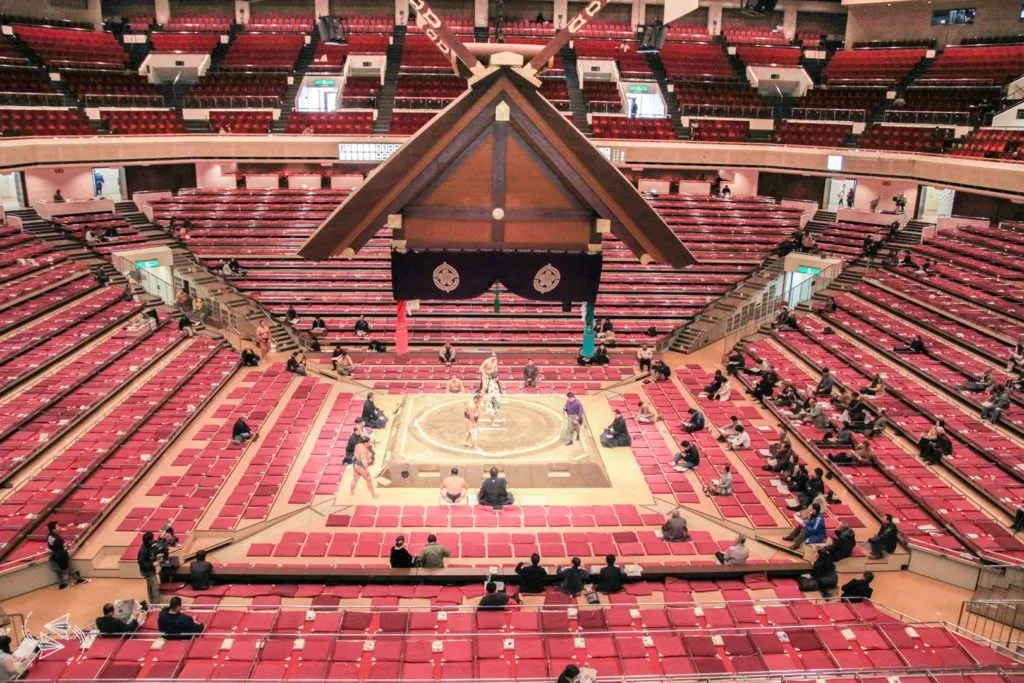
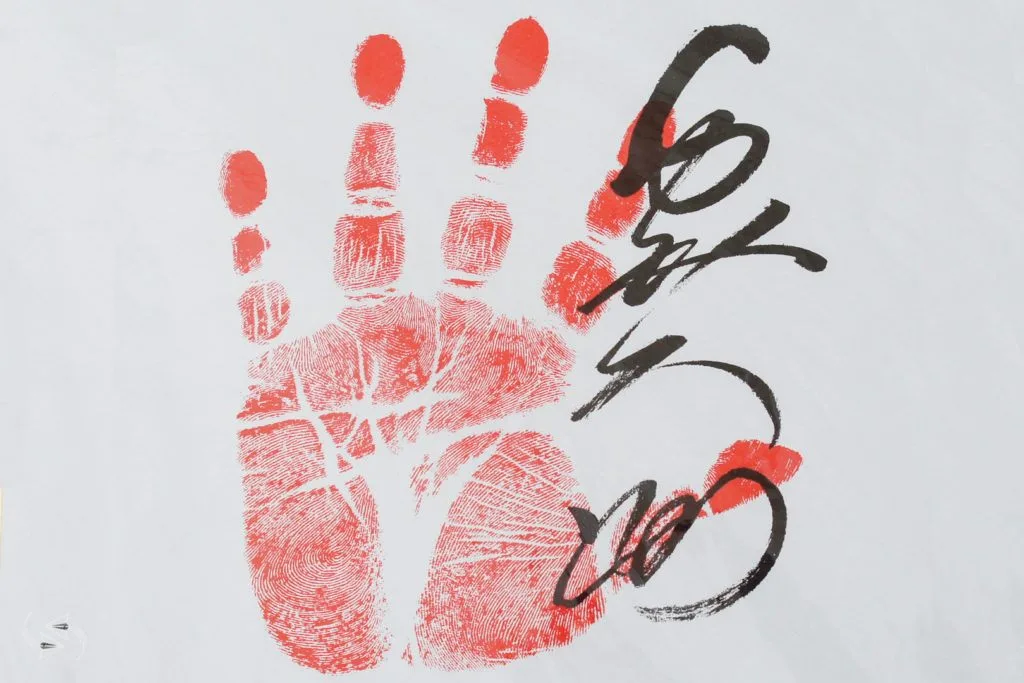
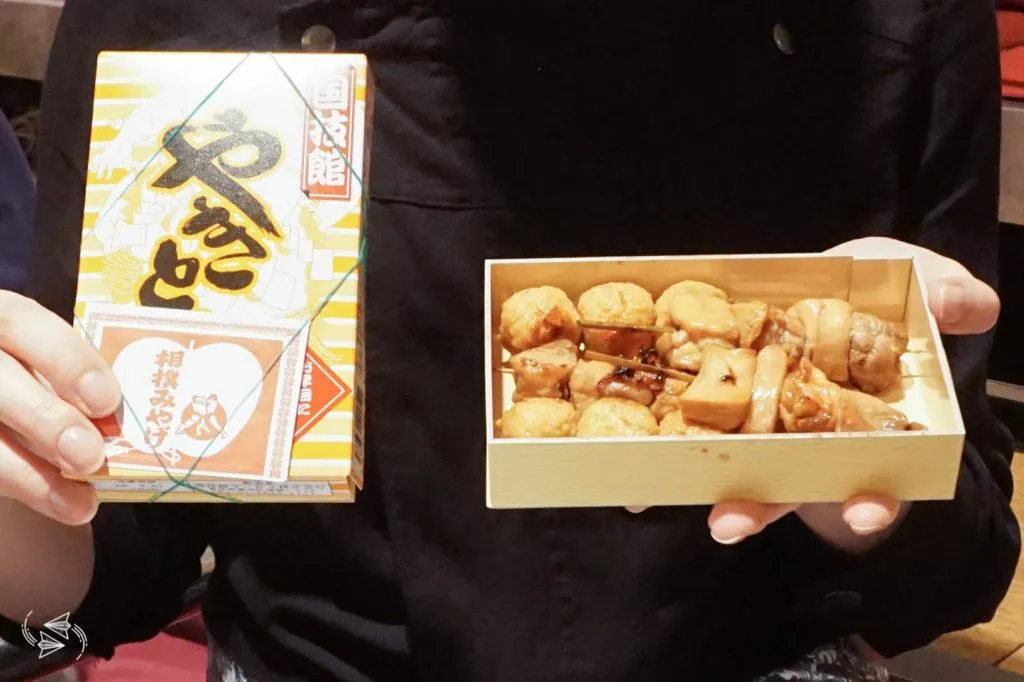
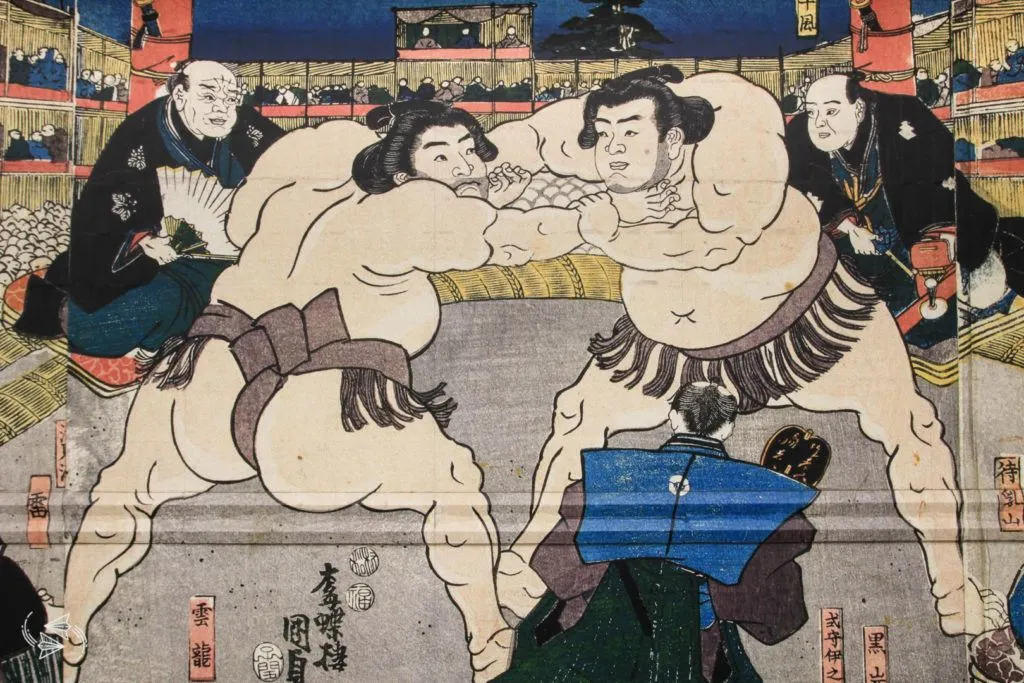
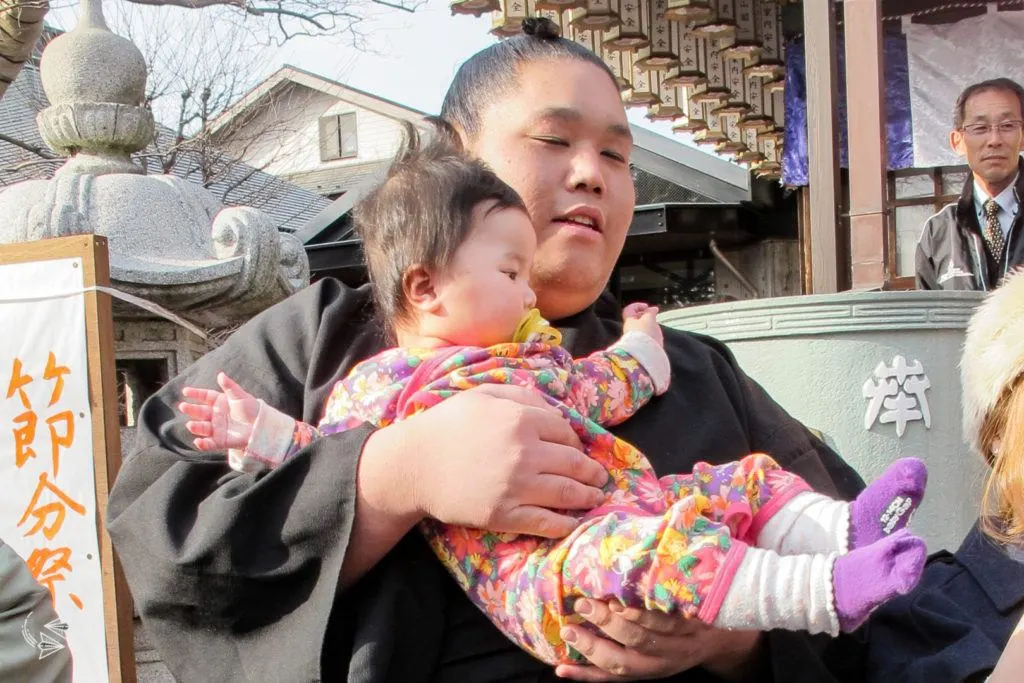
Michelle
Tuesday 16th of July 2019
Hi! We will be in Tokyo and leaving the day before a tournament starts. We won’t get to the tournament but want to go and see morning practice. I’m wondering if there’s a tournament on so close, might their training be different? Maybe they test before a tournament... will it still be worth doing?
Carina Kawahara
Monday 25th of March 2019
In sumo, who are the men dressed in brown at the sumo tournaments
Jo
Friday 25th of January 2019
Jessica - thanks for this great article! We found out a couple of days before we were due to fly to Japan that there was a sumo championship taking place during our visit, and so booked some last minute chair seats to attend. We had done no research apart from reading the guidelines that came with our ticket, but were lucky enough to be sitting next to an enthusiastic Aussie guy who had done lots of reading.
We only made it to the last 2 hours of the day (4-6pm), which were great for the atmosphere. Our new Aussie friend had been there since 1pm, and he said that he found the matches earlier in the day pretty exciting as they were more "unpredictable". I would definitely recommend going for a fantastic cultural experience! I hope to go back to Japan again one day and will refresh my knowledge of sumo etiquette from this article :)
Jerry K
Friday 28th of December 2018
Jessica, Thank you so much for taking the time to write this up. Very detailed and makes it more exciting to at least have a basic understanding before we go. I have a quick question about the chair seating; do you get an assigned chair or is it just somewhere in the designated row?
Jo
Friday 25th of January 2019
Hi Jerry - we booked chair seats in advance and were allocated specific seats in a row (arena B in the Fukuoka venue, which is where the November championships take place). A word of warning, you will make friends quickly as the chair seats have no armrests so you'll be pressed up against your neighbours! A few rows in front of us were some box seats that actually had cushioned chair seats in them plus a little table to rest your drink! But there weren't that many of those - the majority of the box seats were actually for sitting on floor cushions.
Priscilla
Wednesday 5th of December 2018
Thank you for the article! It's very informative. We happen to visit Japan next year and unfortunately (or fortunately??) our last day there is the first day of the Tokyo tournament. Because of flight time, we only have time in the morning until around 2pm.
Do you think it's worth getting tickets just to watch the morning session on the first day of tournament? We've never watched anything sumo before so this would be our first time.
Jessica Korteman
Thursday 6th of December 2018
Hi Priscilla, thanks for reading! I would personally still go and just get the cheapest tickets. As I mentioned in the article, the stadium is essentially empty before lunch, so you can sit in the better box seats until things start to get busy.
Sure, you won't get to see the most exciting top-division matches and you won't have the excitement of a full stadium, however, you will get to experience what the sumo is like and get to see it up-close in relative solitude while learning about how it all works, which is quite a nice experience.
As for it being the first day, it doesn't really have impact unless you are following the progression of the tournament, and honestly this is really only a big deal for the top division. Even then, the wrestlers will participate on every day of the tournament so you get to see everyone anyway, no matter which day you attend.
I hope that helps and if you decide to go, have a wonderful time at the sumo!